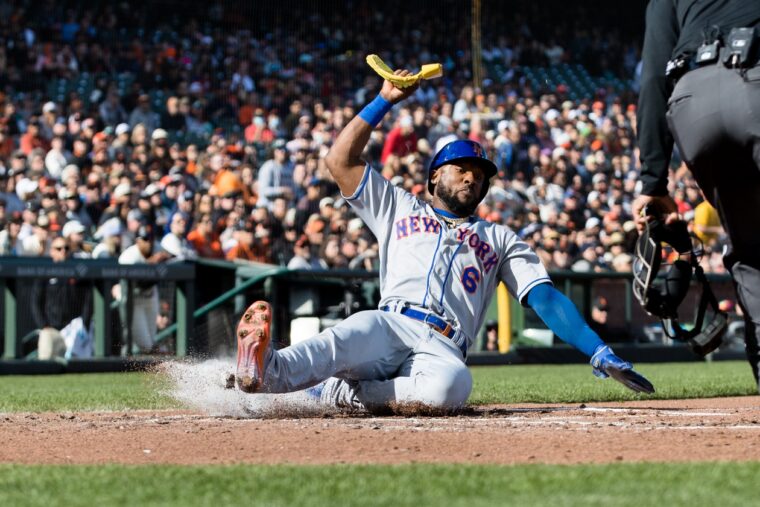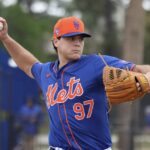
John Hefti-USA TODAY Sports
Starling Marte has struggled in 2023, underperforming his 2022 output greatly just 72 games into the season. So far, the 34-year-old has slashed .238/.301/.321/.622. His isolated slugging percentage (.071), which is the measure of a player’s raw power, has fallen off a cliff from last year’s (.176 in 2022, .159 career average). He’s pulling the ball much less, and fewer of his fly balls are turning into home runs. And with men on base—especially in scoring position—he continues to perform poorly.
So why do the Mets continue to bat Marte second in the order?
The second slot in the order will, on average, get around 20 more plate appearances per season than the third guy in the order, and then 20 more than the next guy, and so on and so on. Last year, it worked out okay for the Mets. Marte, along with Brandon Nimmo, got on base at a high clip, and that set the table for Pete Alonso and Francisco Lindor to both have 100 RBI seasons. Do you want this year’s version of Marte getting dozens of more plate appearances over the year than two of your better players? Though both sluggers are still cashing in with men on base this season, one could argue both could have knocked in even more runs had Marte reached base even at his career average (.344 average, .313 this season).
Marte has 143 plate appearances this year from the two-hole, more than all other slots combined. Here’s his slash line: 217/.289/.271/.560.
Your two-hole hitter simply cannot get on base less than 30 percent of the time. In 118 plate appearances outside of the two-hole (most of them came batting sixth), Marte has a slugging percentage over 100 points higher, and he’s gotten on base much closer to his career norms.
Marte’s poor start to the 2023 season earned him a demotion lower in the order. Jeff McNeil has gotten this treatment at times, too. Once Marte played better, he was boosted back up, returning to the two-hole last week. He’s 6-for-22 (.273) with a walk in that span, including a 2-for-5 performance Monday night with two runs and an RBI. But the Mets seriously need to consider moving Marte back down in the order—for good—if lackluster play continues.
What’s the Solution?
So if Marte moves out of the second spot in the order, who takes his place?
I don’t think Lindor or Alonso are the answer right now. (However, in the name of getting the two more plate appearances, one of them should be hitting second and the other third. Buck Showalter probably won’t do that, though.)
The team has dabbled with Francisco Álvarez, a young power hitter with a great eye, in the second spot. Over 33 plate appearances batting second, though, he’s gotten on base just seven times (.212) despite tremendous power (four home runs) in a short span. He might be the future in the two-hole, but not yet. (There’s also a world where the lineup looks something where Nimmo, Lindor, Alonso, Álvarez, McNeil, and Baty make up the Top 6 in some order.)
For this year’s team, Tommy Pham has done an excellent job over the last month. His on-base percentage has hovered around .330 and shown significant pop (.496 slugging, .237 ISO). He could be a solid short-term solution; if he keeps performing, he will be excellent.
Jeff McNeil, even with his struggles, could be a better option, too. His power is nearly as zapped as Marte’s is this year, but he’s finding ways on base. If the goal is to set the table for Lindor and Alonso, McNeil coming after Nimmo makes more sense than Marte.
The Mets have about 30 more games to get back into the playoff race. And yes, pitching has been the issue. If that doesn’t correct itself, there’s no hope for the team. But the team also needs to roll out a lineup every single day that gives them the best chance to win. It might not be with Marte batting second. It doesn’t need to be that way.














